Sitting down to drink a freshly-steeped cup of tea can be quite satisfying, especially if you have grown the ingredients in your backyard in a tea garden! Herbal teas are a gentle way to include healing herbs in your everyday routine.
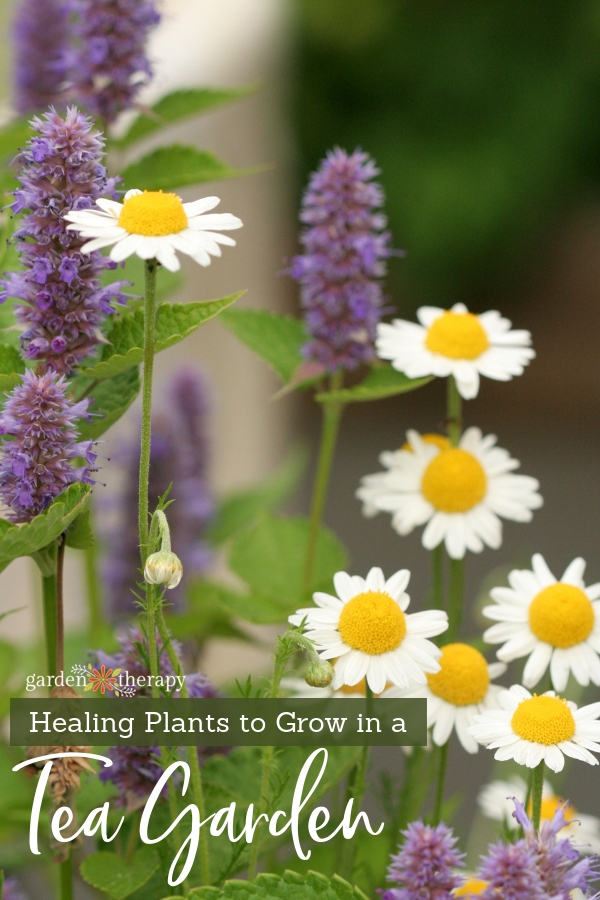
While they don’t have the potency that other herbal preparations have, teas can be a safe way to consume a little dose of an herb regularly throughout the day and over a long period of time.
This can benefit chronic imbalances or support more rigorous treatments for health and wellness. Whether you have a small space or a large plot of land, you can always fit in a tea garden.
Growing herbs is simple and low maintenance, and they can be used in so many ways. Your tea garden plants will move beyond rosemary, sage, and thyme to a whole host of sweet, flavourful, and deliciously decorative plants that can be harvested for tea.
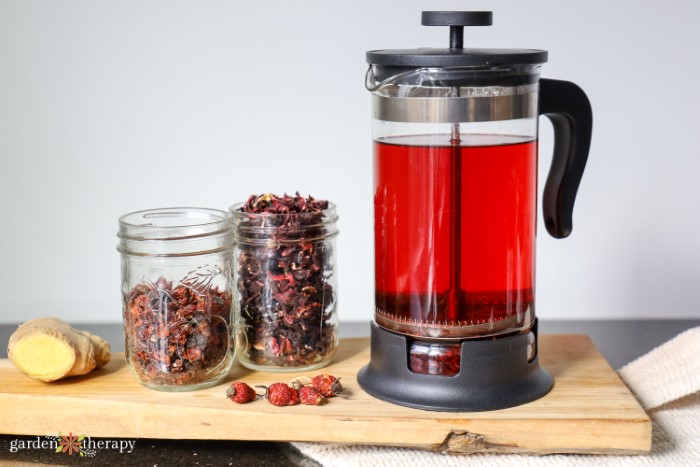
There is a huge list of herbs and flowers that make a wonderful tea. Some have healing benefits, and some are just plain yummy. As a seasoned herbal tea drinker, I have a number of perennial favourites (or annual favourites, as the case may be) that I grow year after year in my personal tea garden.
Jump ahead to…
- Expert Tips for Growing a Tea Garden
- The Best Tea Garden Plants
- Bee Balm (Monarda)
- Calendula (Calendula Officinalis)
- Catnip (Nepeta cataria)
- Chamomile (Matricaria recutita)
- Dandelion (Taraxacum)
- Coneflower (Echinacea)
- Fennel (Foeniculum vulgare)
- Feverfew (Tanacetum parthenium)
- Hibiscus (Hibiscus sabdariffa)
- Holy Basil (Ocimum tenuiflorum)
- Lemon Balm (Melissa officinalis)
- Mint (Mentha)
- Pine (Pinus)
- Pineapple Sage (Salvia elegans)
- Rose (Rosa)
- Rosemary (Rosmarinus officinalis)
- Stevia (Stevia rebaudiana)
- Frequently Asked Questions About Growing a Tea Garden
- More Tea Tips
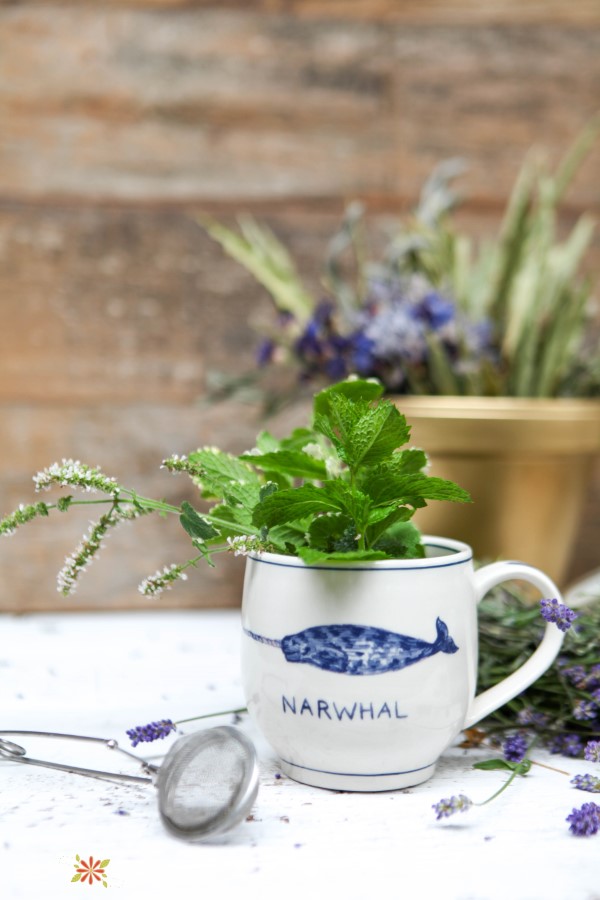
Expert Tips for Growing a Tea Garden
- Each herb has unique herbal properties. Before planting, research the benefits of your tea garden plants.
- Grow your tea garden close to the home so you can easily harvest fresh leaves and flowers for tea.
- Harvest herbs in the morning, as that’s when they have the most flavour and medicinal properties.
- Dry your herbs and store them in a tightly sealed glass jar to have on hand in the winter season.
- Use boiling water to make your tea. Avoid over-steeping, as the herbs can taste bitter.
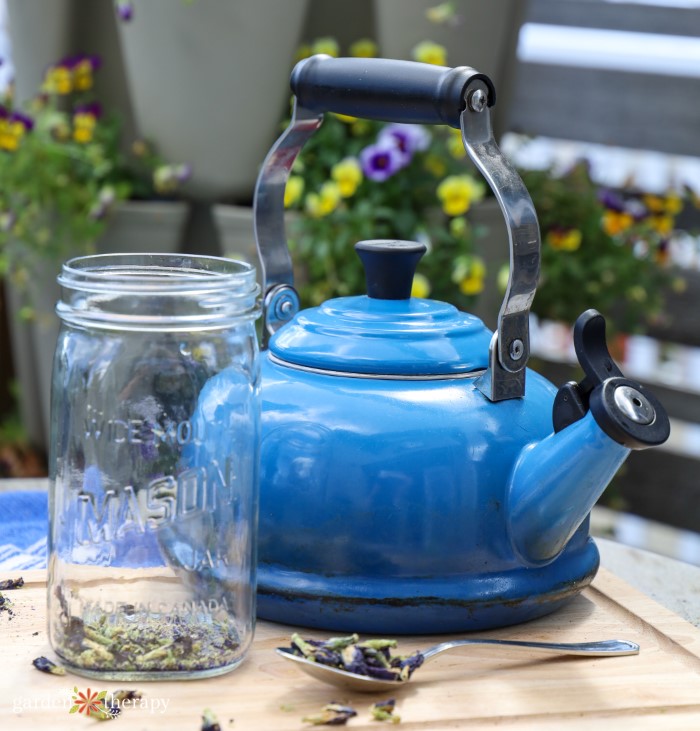
The Best Tea Garden Plants
These are some of my favourite tea herbs that are easily grown in the home garden and the reasons why I grow them. Why not include some tea garden plants when planning what you will grow this year?
Bee Balm (Monarda)
Zones 4-9
Brew the leaves into an aromatic, medicinal tea that tastes similar to mint but milder. It is purported to combat colds and flu, and the tea is soothing on a sore throat.
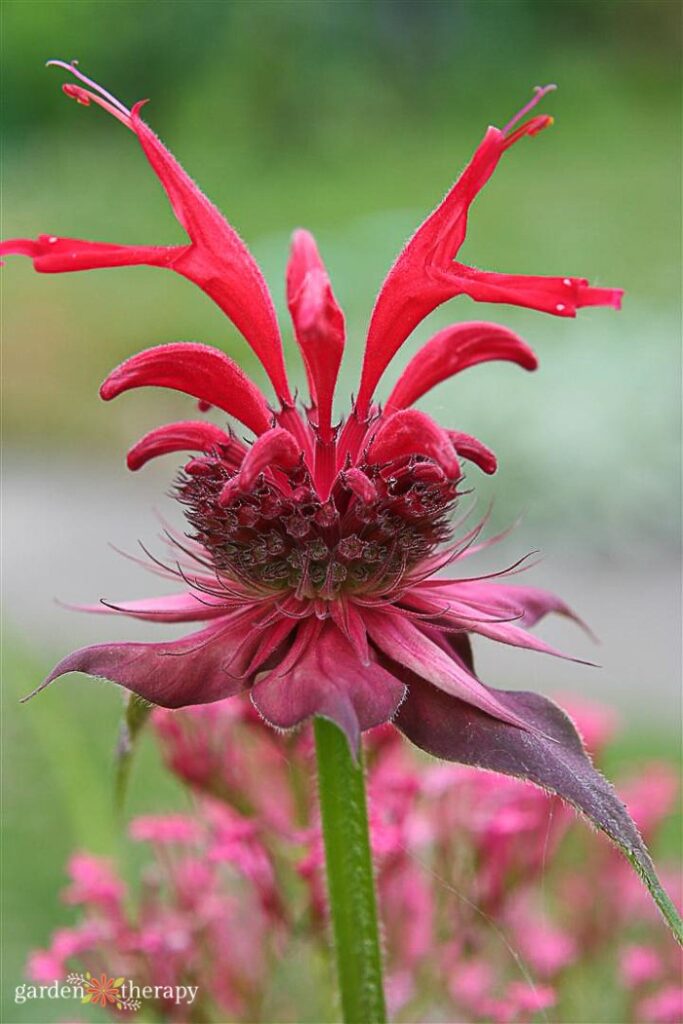
Calendula (Calendula Officinalis)
Zones 9-11 (but can be grown as an annual in colder zones)
Calendula’s natural anti-inflammatory properties make it wonderful for curing a sore throat and helping heal urinary tract infections. Read more about the benefits of Calendula here.
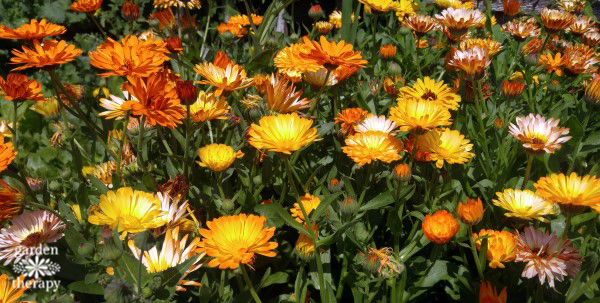
Catnip (Nepeta cataria)
Zones 3-9
Catnip leaves and flowers can be brewed into a tea that is purported to help promote relaxation and reduce anxiety. Catnip tea tastes similar to mint but earthier and with slight citrusy notes.
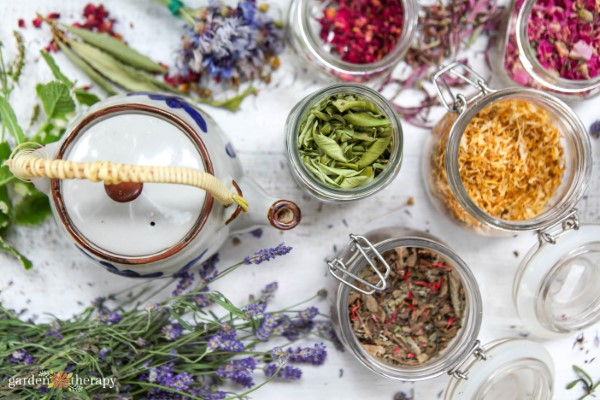
Chamomile (Matricaria recutita)
Zones 3-9
Chamomile is a good go-to tea just before bedtime because it is purported to promote sleep and treat insomnia (read more on that here). It may also reduce anxiety and soothe an upset tummy.
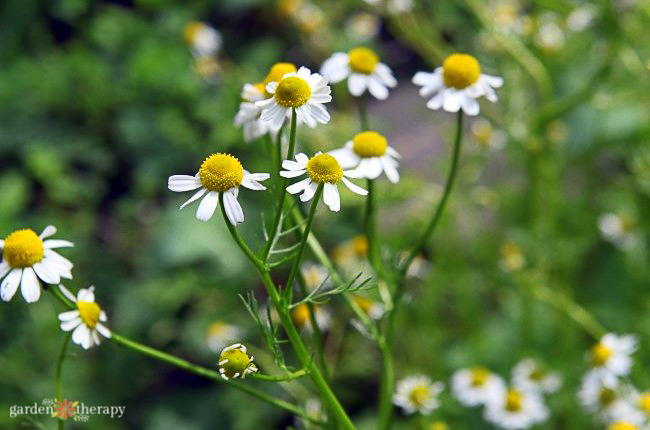
Dandelion (Taraxacum)
Zones 3-9
Dandelions aren’t just annoying weeds; they are actually a nutrient-packed superfood! They are rich in potassium as well as Vitamins A, C, and K, and dandelion tea is often used to help treat digestive problems.
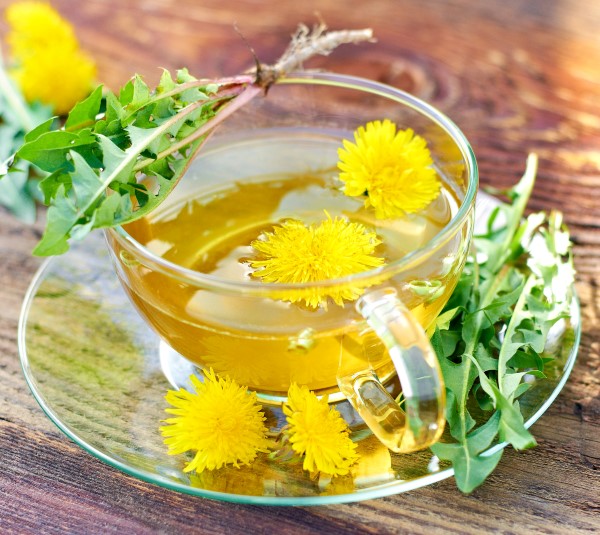
Coneflower (Echinacea)
Zones 3-9
Echinacea tea can help to boost your immunity and fight off colds and flu. Echinacea tea has a strong floral taste which many people like to pair with a sweetener like honey or stevia.
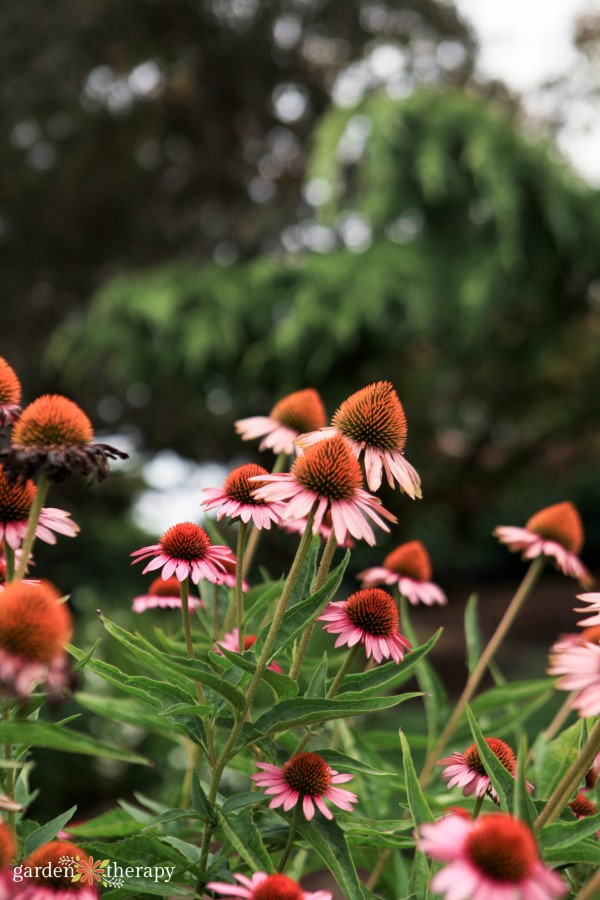
Fennel (Foeniculum vulgare)
Zones 6-10
Fennel tea is purported to aid in digestion and painful menstrual cramps. The tea has a delicious, slightly bitter licorice taste.
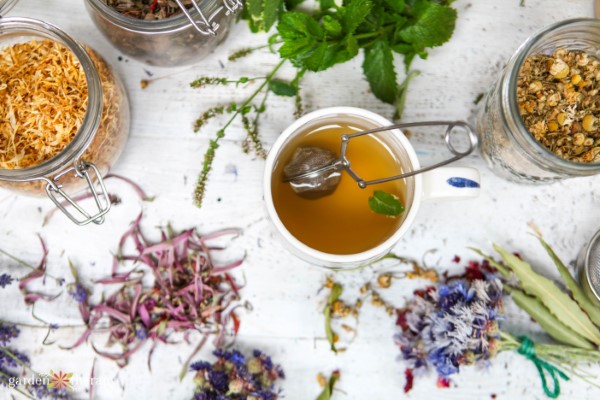
Feverfew (Tanacetum parthenium)
Zones 5-9
Known as wild chamomile, feverfew is a well-known herbal flower famous for aiding headaches. Those with migraines would benefit immensely from sipping feverfew tea. It also has great anti-inflammatory properties and can help with menstrual issues.
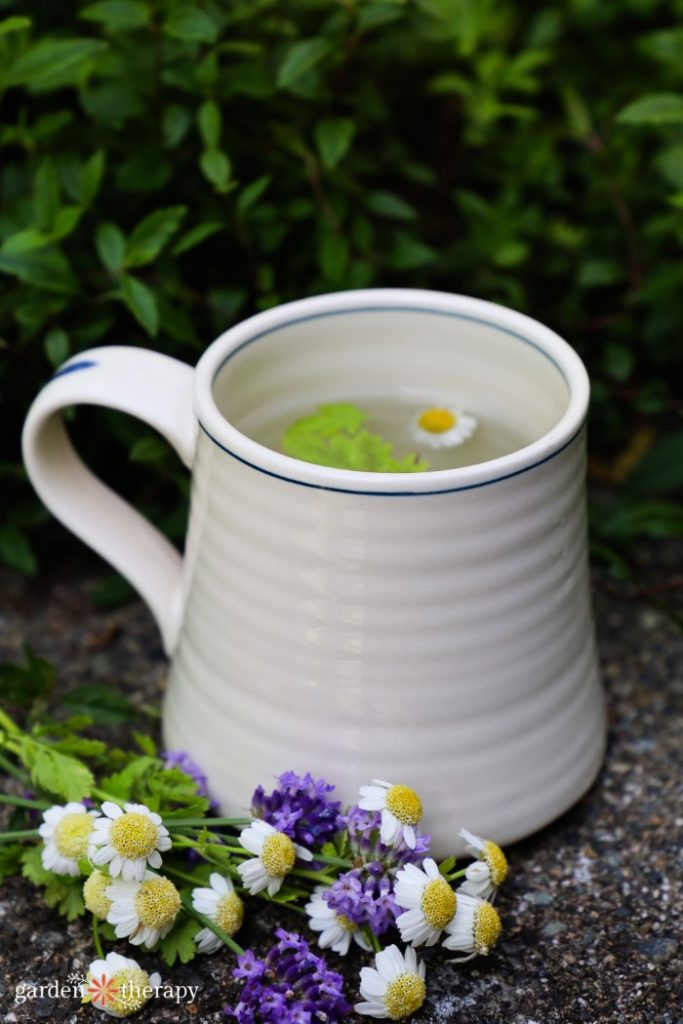
Hibiscus (Hibiscus sabdariffa)
Zones 5-11
Be sure to choose an edible variety of hibiscus for making tea, as some are bred just to be ornamental. Hibiscus tea tastes fruity and tart. Hibiscus is rich in Vitamin C, aids digestion, and may help to lower blood pressure.
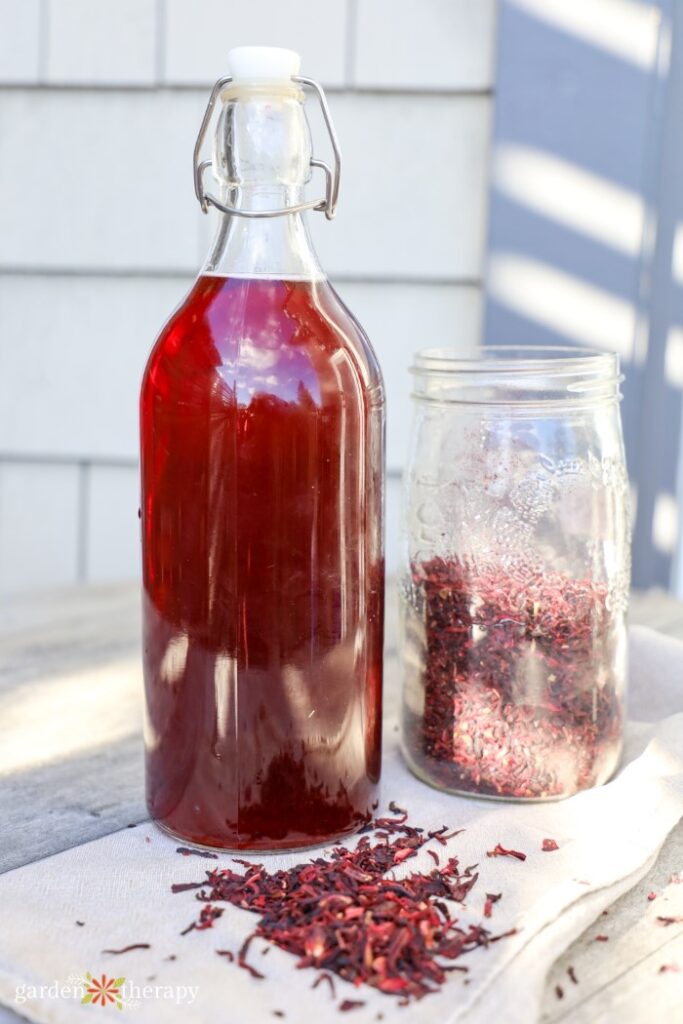
Holy Basil (Ocimum tenuiflorum)
Zones 7-10
Holy basil is full of vitamins and also contains zinc, magnesium, calcium, and iron. It is said to boost immunity, reduce stress, and promote overall health.
Lemon Balm (Melissa officinalis)
Zones 4-9
Lemon balm has a citrusy, slightly minty taste, making for a delicious tea. It is also thought to have stress-reducing properties, so sip this when you need to calm your mind.
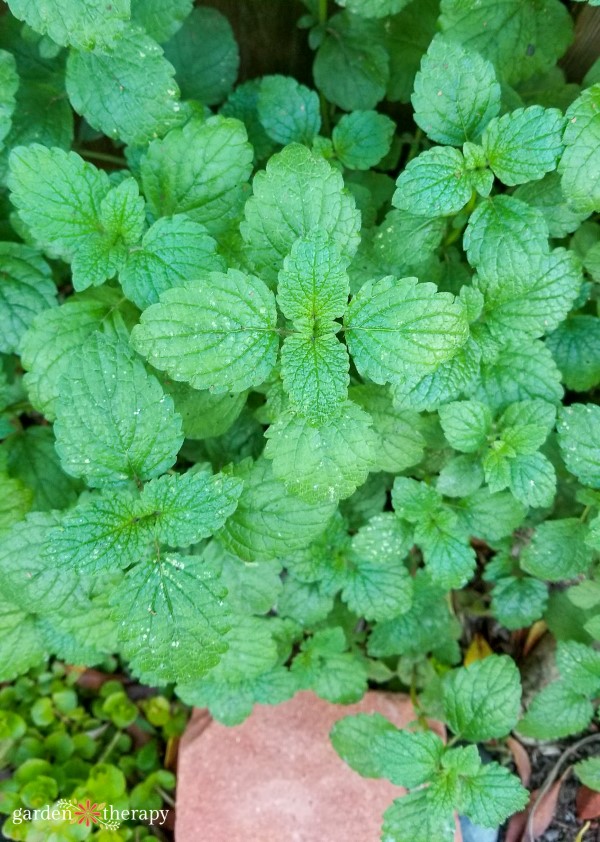
Mint (Mentha)
Zones 3-11
This herb is one of the most popular for tea, and it’s no wonder why. The comforting flavour of mint tea is perfect for a hot drink on a cold day. It can help soothe a sore throat and is thought to improve sleep. There are a ton of different mint varieties out there, so you can brew all kinds of tasty teas like chocolate mint, pineapple mint, and lots more!
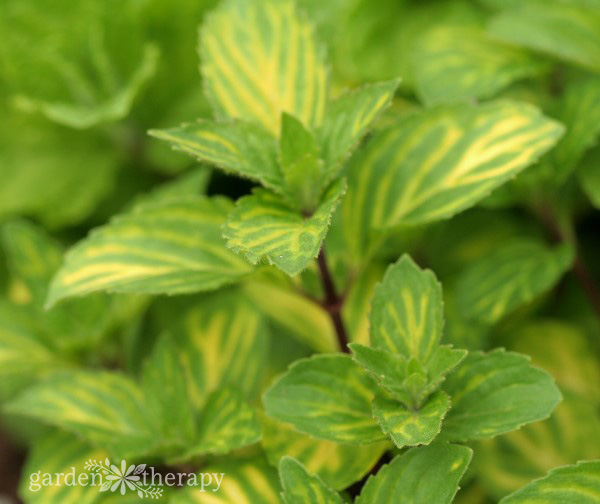
Pine (Pinus)
Pine needle tea may not be your go-to, but the tea itself is a very traditional way to get the herbal benefits of pine. It’s best combined with other plants on this list, such as peppermint, catnip, and thyme. Also, add honey for sweetness!
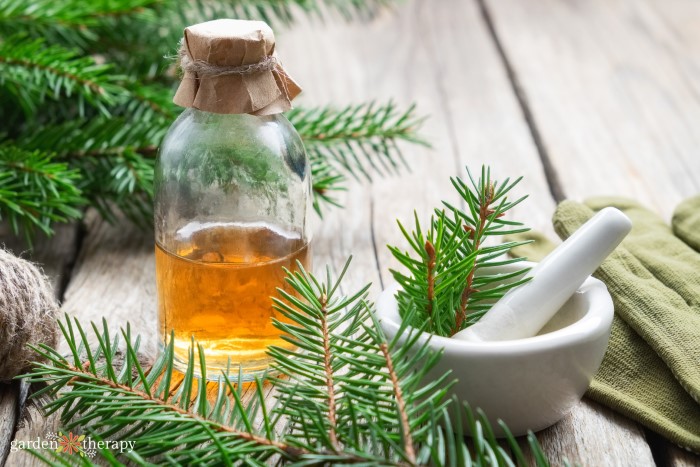
Pineapple Sage (Salvia elegans)
Zones 8-11 (but can be grown as an annual in colder zones)
Pineapple sage makes a lovely tea because it has the sweet taste of pineapple combined with the earthy flavour of sage. It also contains antioxidants, so this is a sweet treat you can feel good about putting into your body.
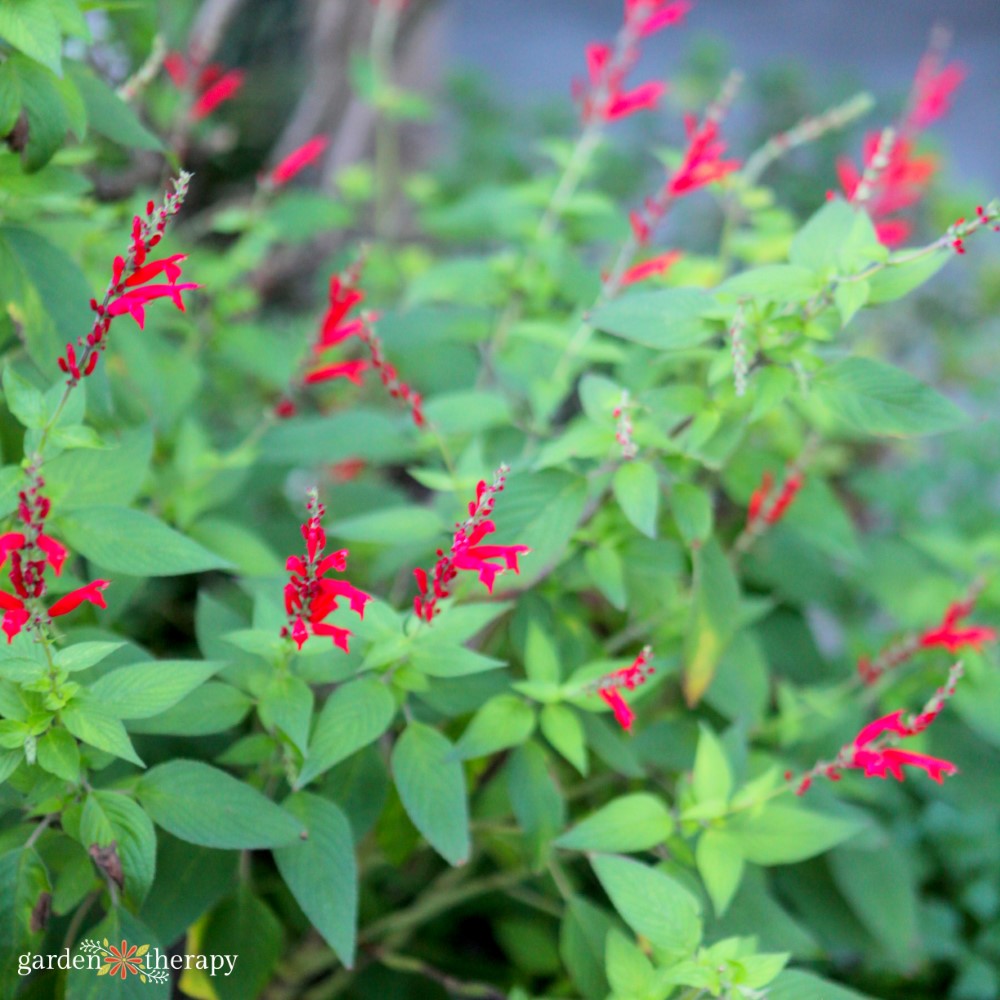
Rose (Rosa)
Zones 3-9
You can use rose petals and rosehips to make tea. Rose petal tea is full of Vitamin C to boost immunity and can help ease the pain of menstrual cramps. Plus, it has a lovely floral flavour. Rosehip tea has a tart, fruity flavour and is packed full of nutrients such as Vitamin C, calcium, and zinc.
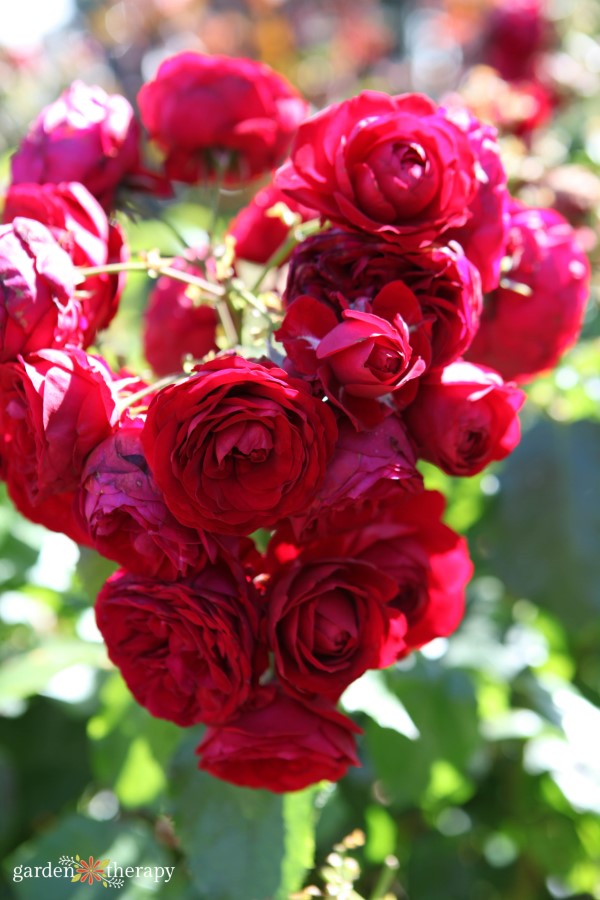
Rosemary (Rosmarinus officinalis)
Zones 6-9
Rosemary has a ton of health benefits, including helping to boost memory and mood and decrease inflammation. You can read more about rosemary’s numerous medicinal properties here. Rosemary tea is quite strong tasting on its own and is delicious when blended with other herbs such as thyme or mint.
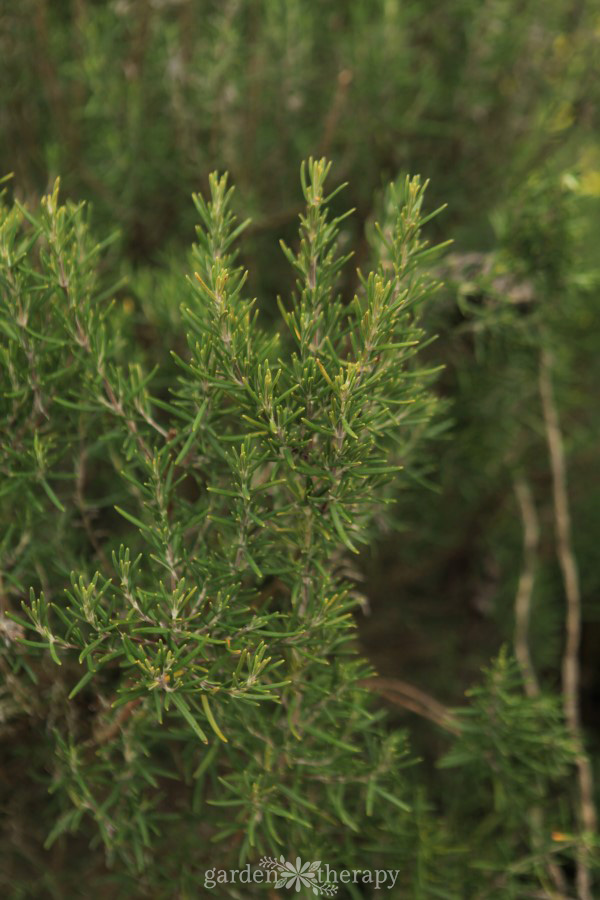
Stevia (Stevia rebaudiana)
Zones 8+
Stevia leaves contain Vitamins C and A as well as iron, potassium, zinc, and calcium. Since the leaves are so sweet, I like to add them to other teas instead of using honey or other sweeteners. Read more on how to use stevia here.
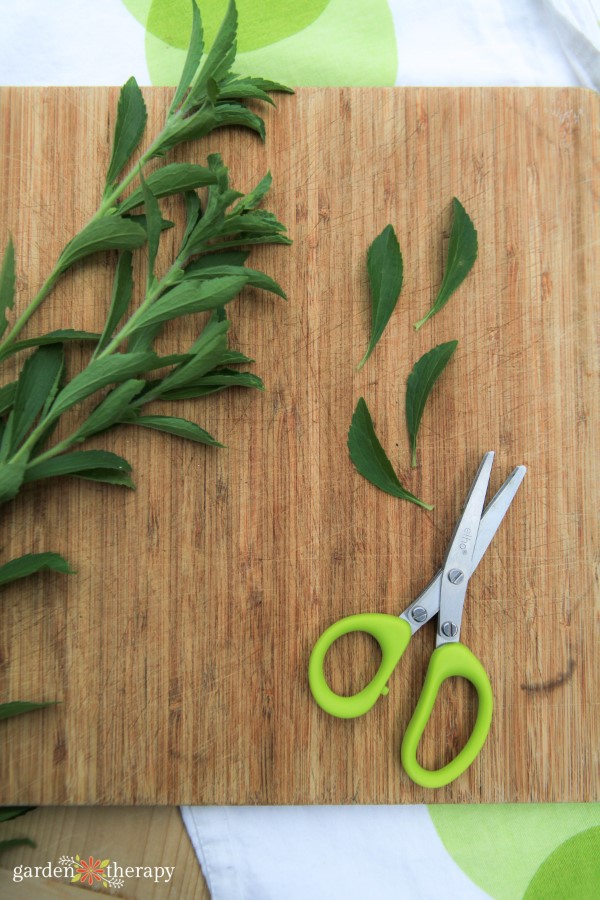
Stinging Nettle (Urtica dioica)
Zones 4-10
You can make nettle tea by grinding the leaves in a coffee grinder or by steeping the fresh or dried leaves. Most people will use nettle tea as a nourishing herbal tonic. It’s highly rich in minerals and plant protein. It has a salty, umami taste.
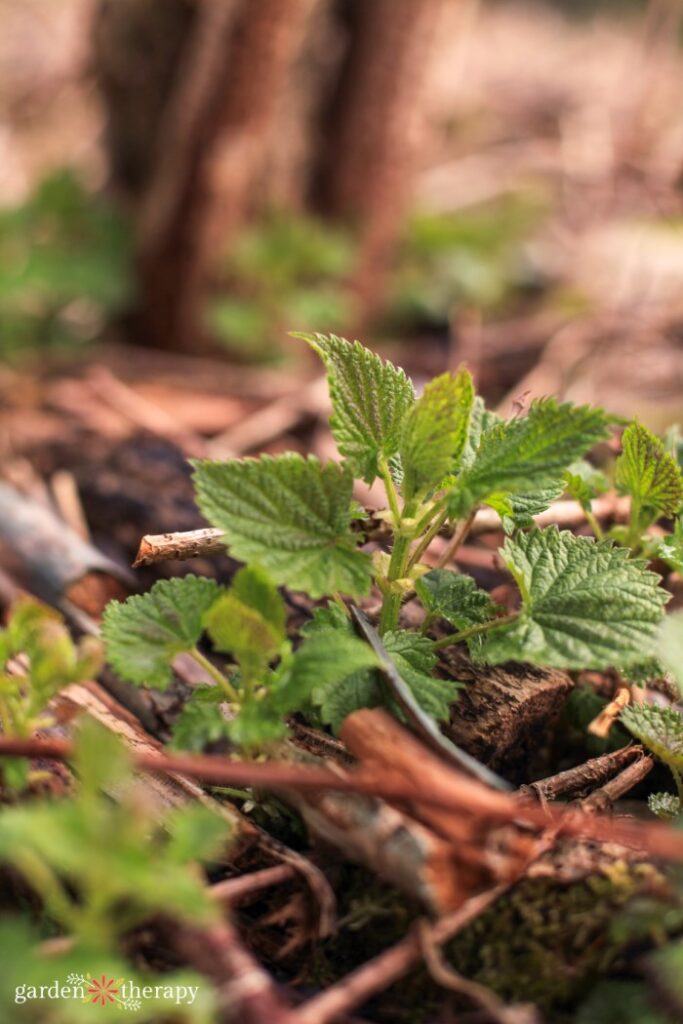
Frequently Asked Questions About Growing a Tea Garden
A tea garden is grown specifically to be harvested and steeped in a cup of tea. Most of the herbs are grown either for their taste or their herbal benefits.
The types of tea you like are unique to your taste buds. You can grow many different herbs, but you should only plant those you will enjoy sipping later. If you want to plant herbs for their benefits but they have a not-so-pleasant taste, combine them with other more pleasant herbs, like pineapple sage, mint, or lemon balm.
Each plant will have its own sunlight requirements, and I suggest looking up the individual plant’s needs. Group plants with similar growing conditions so that each plant grows well. You can also grow your plants in pots so that you can move them as needed to match their sunlight needs.
More Tea Tips
Small space? No problem! Plant your tea herbs in a strawberry pot, or turn this mosquito repelling planter into a tea garden with some of the herbs listed in the previous articles.
No garden space outside? Grow inside! You can create this vertical herb garden and harvest tea all year round.
Read this post on how to harvest and prep herbs for the perfect cup of tea every time. It is really an art, especially to get the most herbal properties from the tea.
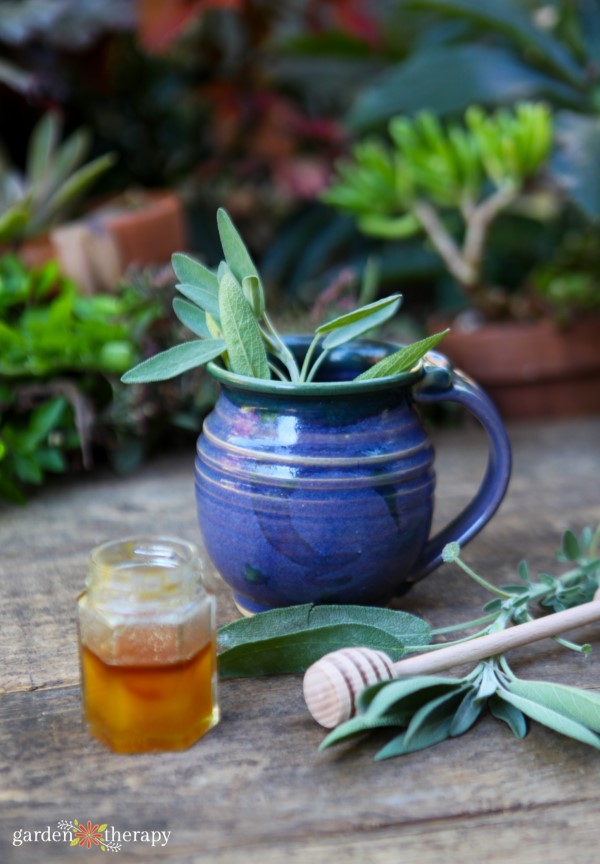
Be sure to check out these other posts for more ways to use herbs and make tea.

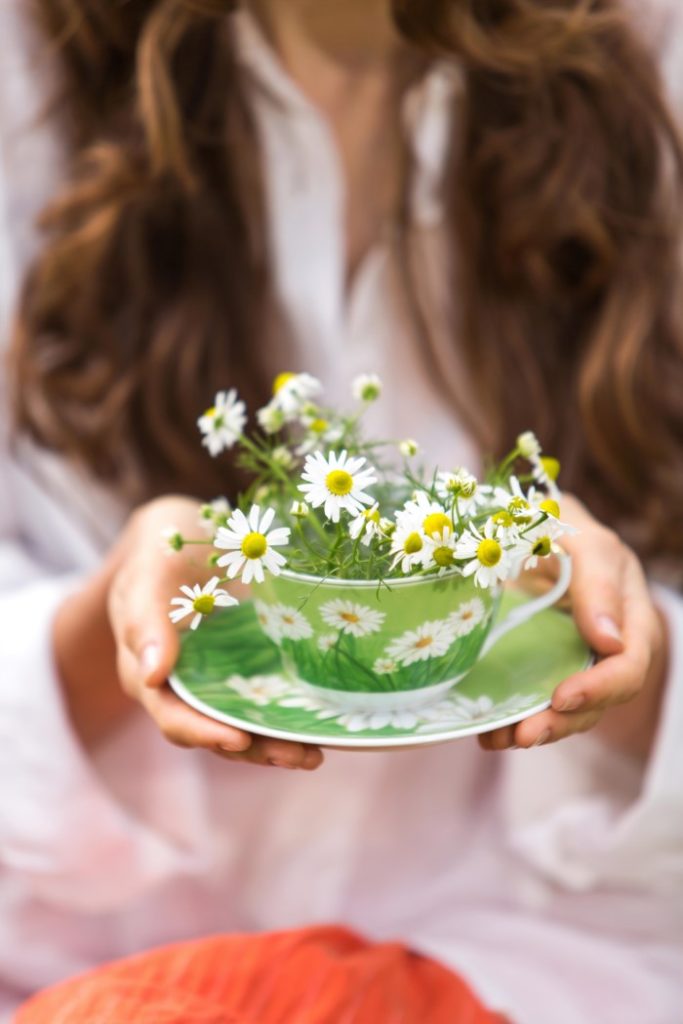
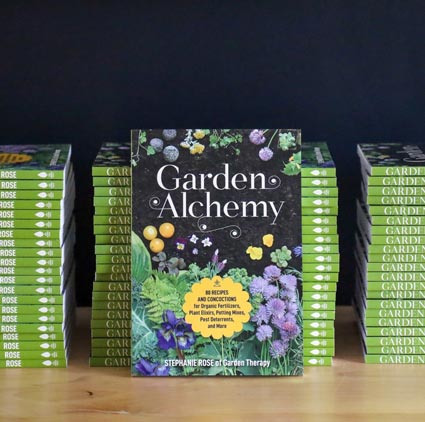


Are all of these herbal teas also safe during pregnancy? Or do you have any that you specifically recommend for pregnancy and morning sickness?
I’m super excited to start my herbal tea garden!! Also, do you have to put a grow light on your indoor herbs?
Congratulations! What lovely news. There are different herbs that are beneficial or to avoid during different parts of pregnancy. I would suggest getting a personalized plan from your healthcare provider or herbalist.